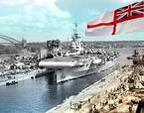Rio Bravo
Posts: 1794
Joined: 7/13/2013
From: Grass Valley, California
Status: offline

|
CULPEPPER CATTLE COMPANY
September 26, 1943
BACKGROUND
Operation Land Shark
On the eve of October 14, 1942, the Allies had established a massive force in India along the border of Burma from Cox’s Bazar to Ledo. This force consisted of U.S. Army, Australian, British, and Indian Infantry Divisions supported by numerous armor, artillery, anti-aircraft, and engineers along with hundreds of fighters, bombers, search, and transport aircraft that had also been shipped to India. It had taken the Allies ten (10) months to consolidate such a massive force along the India-Burma border.
The next day, after the end of the Monsoon Season, on October 15, 1942, the Allies launched Operation Land Shark.
The primary Objective of Land Shark is to march from India to Manchukua and Korea; thereby liberating Burma and China and conquering Manchukua and Korea.
The Allies had initially thought that they would easily roll through Burma and be in China in force prior to the first day of February, 1943. However, the Allies were surprised when they learned that they were facing the equivalency of twenty (20) Japanese Infantry Divisions in Burma. It took the Allies until September 24, 1943 to boot the Japanese from Burma into Thailand.
As of September 26, 1943, Operation Land Shark has an Assault Value of 2,000 in China situated due West of Paoshan. The balance of the U.S. Army, Australian, and British Land Shark forces are in route from Burma to China. Within the first couple weeks of October, 1943, Land Shark will have an approximate Assault Value in China of 7,500.
Operation Sea Shark
On June 4, 1943, Operation Sea Shark left Pearl Harbor. Sea Shark ground forces consisted of a U. S. Marine Assault Value of 3,200 and a combined U.S. Army, Canadian, and New Zealand Assault Value of 2,900 along with numerous armor, artillery, anti-aircraft, engineers, and 1,600 fighters, bombers, search, and transport aircraft.
The primary Objectives of Operation Sea Shark were to capture the four Southern Marianas Islands to provide a staging area for upcoming Operations Bottle (the invasions of Takao, Formosa), Cork (the invasion of Pescadores), and John B. Hood (the invasion of Amoy, China) and to provide the Eastern lynchpin for the upcoming naval blockade of Japan proper (Operation name to be identified and provided to The War College members in the near future).
On June 23, 1943, Sea Shark forces captured Saipan, Tinian, Rota, and Guam.
Operations Bottle, Cork, and John B. Hood
On September 10, 1943, Operations Bottle, Cork, and John B. Hood left the four Southern Marianas islands. Bottle, Cork, and Hood ground forces consisted of a U.S. Marine Assault Value of 3,200 and a U.S. Army Assault Value of 2,000 along with numerous armor, artillery, anti-aircraft, and engineers.
The primary Objectives of Operations Bottle, Cork, and John B. Hood were to provide a logistics path to China, to provide the Western lynchpin for the upcoming naval blockade of Japan proper, and to provide bases to bomb aircraft factories on Japan proper.
On September 24, 1943, The U.S. Army captured Takao, Formosa and Pescadores, and the U.S. Marines captured Amoy, China.
These three operations are presently unloading the balance of troops, supply, and fuel at the above three locations.
Present Day China
Within the first month of the outbreak of hostilities with Japan, it was evident that El Lobo intended to conquer all of China. El Lobo has dedicated approximately the equivalent of twenty (20) plus infantry divisions along with substantial air assets to accomplish this goal.
To date, El Lobo controls all of China except for the following areas:
1.) The Himalayas (i.e., the road from Chengtu southwest through the mountains to Tsuyung)
2.) Chungking.
3.) South of Chungking to Chihkiang.
4.) Amoy.
5.) West of Paoshan to the Burmese border.
Presently, El Lobo has distributed the vast bulk of his troops in China as follows and he has a substantial force that fled Burma to Chiang Mai Thailand as follows:
Chungking
5,176 AV
10 Division
20 Division
23 Division
32 Division
35 Division
40 Division
58 Division
63 Division
104 Division
110 Division
2 Ind. Mixed Brigade
11 Ind. Mixed Brigade
69 Infantry Regiment
3 Tank Regiment
5 Tank Regiment
One Hex SE of Chungking (77,46)
3,072 AV
3 Division
14 Division
34 Division
36 Division
37 Division
41 Division
7 In. Mixed Brigade
11 Tank Regiment
Approximately 20 other units between Chungking and Chihkiang. AV unknown.
One Hex W of Paoshan (64,45)
2,859 AV
6 Division
13 RGC Temp Division
22 Division
39 Division
60 Division
58 Infantry Regiment
61 Infantry Brigade
71 Infantry Brigade
138 Infantry Brigade
3 Tank Division
7 Ind. Tank Brigade
Paoshan
11 units; 33,800 troops; 206 guns; and 227 AFV.
Chiang Mai Vicinity
5,199 AV
1 RTA Division
2 Division
2 Guards Division
4 Guards Division
5 Guards Division
17 Division
19 Division
33 Division
38 Division
48 Division
52 Division
56 Division
Guards Mixed Brigade
7 Guards Infantry Regiment
11 Militia Regiment
23 Indian Mixed Brigade
41 Infantry Regiment
Guards Tank Division
1 Tank Regiment
4 Tank Regiment
Presently, the Allies have the following ground forces either in China or in route to China:
Himalaya Mountains
1,500 Assault Value (Chinese Troops).
Chungking
6,671 Assault Value (Chinese troops).
South of Chungking to Chihkiang
6,668 Assault Value (Chinese Troops).
Amoy
3,200 Assault Vale (U.S. Marines).
Paoshan Vicinity
2,000 Assault Value (U. S. Army).
In Route from Burma to China
1,500 Assault Value (U.S. Army).
2,500 Assault Value (Australians).
1,500 Assault Value (British).
OPERATION CULPEPPER CATTLE COMPANY
Objectives
1.) Open a logistics path from Amoy to Chihkiang to get supply to the Chinese that have already fled Chungking and are marching south to meet the Marines at Chihkiang.
2.) Build airbases and forts along the logistical path from Amoy to Chihkiang.
3.) Disrupt Japanese supply to Japanese troops in the north and those in the vicinity of Paoshan.
4.) Apply pressure on Japanese troops to encourage El Lobo to withdraw all or at least a portion of the Japanese that have laid siege to Chungking.
Ground Forces
The following United States Marine Infantry and Armor units along with eleven (11) Marine Corps Defense Battalions and numerous engineers have captured and are presently situated at Amoy, China:
1 Marine Division
2 Marine Division
3 Marine Division
4 Marine Division
22 Marine Regiment
1 Marine Raider Battalion
2 Marine Raider Battalion
3 Marine Raider Battalion
4 Marine Raider Battalion
1 USMC Parachute Battalion
2 USMC Parachute Battalion
3 USMC Parachute Battalion
1 USMC Corps Tank Battalion
1 USMC Tank Battalion
2 USMC Tank Battalion
3 USMC Tank Battalion
4 USMC Tank Battalion
640 TD Battalion
The Route to Chihkiang
Amoy
Kukong
Henyang
Shaoyeng
Chihkiang
Perhaps, depending upon circumstances, the Marines will also capture Kanhsien, Kweilin, and Singatan.
Commencement Date
Operation Culpepper Cattle Company is scheduled to commence on September 29, 1943 after Operation John B. Hood has fully unloaded approximately 650,00 of supply at Amoy.
Special Correspondent Updates
Captain Haggard has imbedded a Special Naval War Correspondent (F. Q. Bloomquist-Rose, of SPECOP Haggard Group) with the First Marine Division and will provide updates regarding the Marines progress with Operation Culpepper Cattle Company.
End Note
I do not expect El Lobo to welcome the Marines with open arms and cordially invite them to the “Annual Chungking Fall Roundup and Barbecue.”
Attached below is a map of China as of September 26, 1943.
Best Regards,
-Terry

 Attachment (1) Attachment (1)
< Message edited by Rio Bravo -- 10/27/2017 8:12:21 PM >
_____________________________
"No one throws me my own guns and tells me to run. No one."
-Bret (James Coburn); The Magnificent Seven
|
 Printable Version
Printable Version

















 New Messages
New Messages No New Messages
No New Messages Hot Topic w/ New Messages
Hot Topic w/ New Messages Hot Topic w/o New Messages
Hot Topic w/o New Messages Locked w/ New Messages
Locked w/ New Messages Locked w/o New Messages
Locked w/o New Messages Post New Thread
Post New Thread